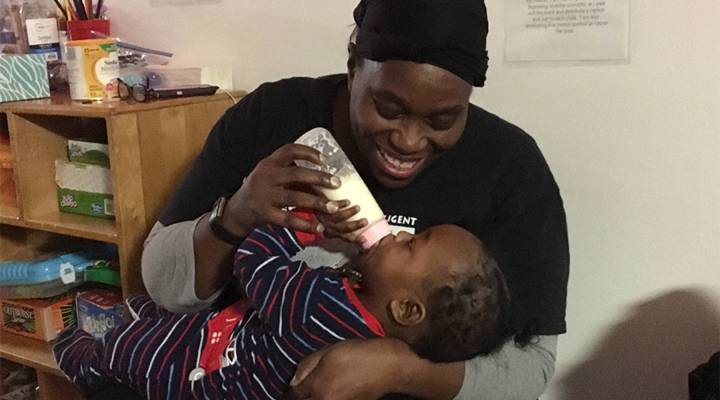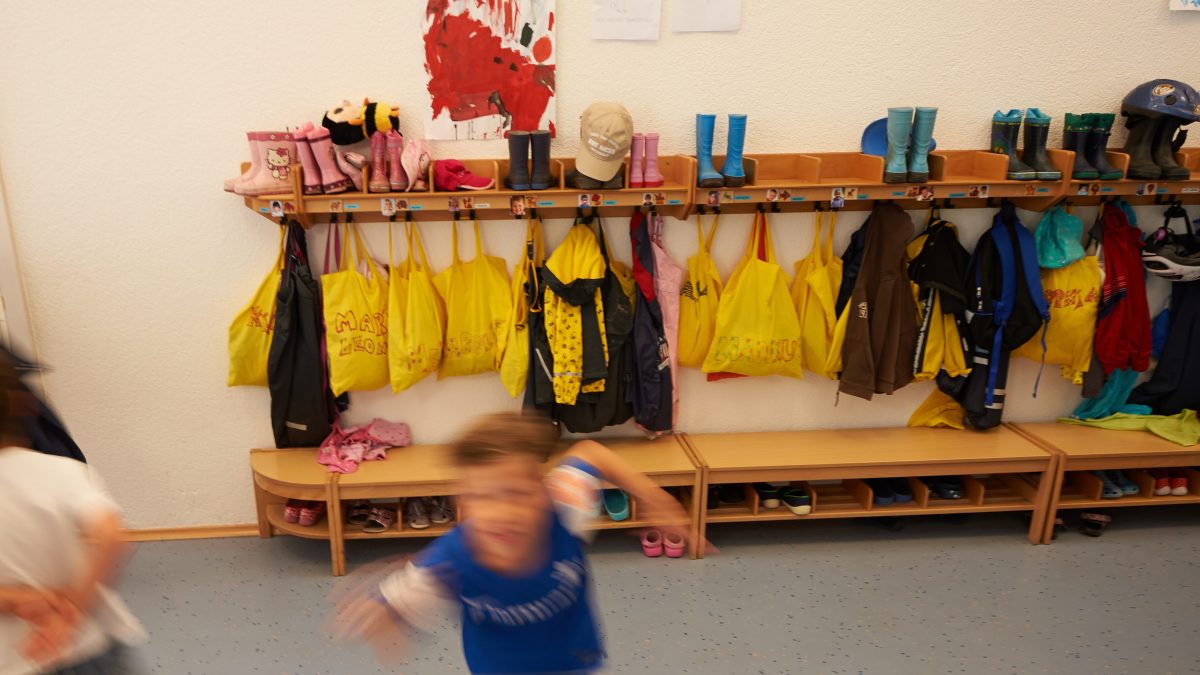
Millions of workers don’t do 9 to 5. So where’s the child care?
Millions of workers don’t do 9 to 5. So where’s the child care?

Most nights for Chardae Smith, a 33-year-old single mom in Pittsburgh, start with dropping off her baby at ABK Learning and Development Center around 10:30 p.m. to make it to work by 11.
Smith does overnight home health care for people with disabilities. It was easy getting the job — but finding safe, affordable care for her son? She said that was “very hard. The medical field is 24 hours. There’s no certain day shift, evening shift, you work around the clock. So you need child care around the clock.”
These days, 40 percent of Americans work nontraditional hours, many of them on-demand in low-wage, part-time jobs. Yet, less than 10 percent of child care centers offer care during nights and weekends. Before Smith found ABK, she felt trapped.
“It was kind of heartbreaking because you go to a job interview, you get the job and you can’t find a child care, so you have to turn the job down. It kind of turns your world upside down,” she said.
Work scheduling has become increasingly unpredictable, according to Kathleen Gerson, a sociologist at New York University who has spent decades studying labor and child care.
“If you were to time travel back even a decade or so ago and asked people about 24-hour day care, they would have looked at you with a combination of puzzlement and horror,” she said.
That’s because of changes that have occurred in the past decade, particularly with the growth of the health care industry and online shopping. Even though some states and cities have passed legislation that require employers to make schedules in advance, not all employers do so. For many workers, “Their hours vary from day to day, from week to week,” said Susan Lambert, a professor at the University of Chicago. “So it’s not just the timing. It’s also not being able to predict when you’ll work. Or how much you’ll earn.”
Lesely Crawford, who runs ABK, understands why there aren’t many 24/7 centers.
“It’s not like there’s this huge amount of money … this pot of gold at the end that you’re going to get as a result of it,” she said.
At her center, parents pay around $40 a day for care, and she has to cover rent, insurance and additional labor costs. The 24/7 child care model is especially hard because when employers give workers irregular schedules, then their need for child care is irregular.
“That means that day care is also going to be having revenues that are irregular,” explained Lonnie Golden, an economist at Pennsylvania State University.
Crawford of ABK, who is in her 50s, said operating an all-day business takes a certain type.
“I could be as tired as ever, but when I know its time for me to get up and go to the day care, I spring out the bed,” she said.
Because even if she’s done juggling the late-night drop-offs and pickups, the early morning crowd is never far behind.
There’s a lot happening in the world. Through it all, Marketplace is here for you.
You rely on Marketplace to break down the world’s events and tell you how it affects you in a fact-based, approachable way. We rely on your financial support to keep making that possible.
Your donation today powers the independent journalism that you rely on. For just $5/month, you can help sustain Marketplace so we can keep reporting on the things that matter to you.


















